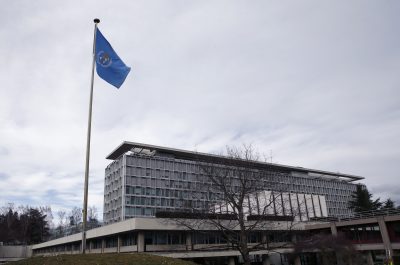DAVID FIDLER. The dangerous COVID-19 quest for WHO reform (EAF 10.5.20)
May 18, 2020The COVID-19 pandemic has created a health and a political crisis. Political tensions threaten to damage the global fight against the coronavirus.
The World Health Organization (WHO) is in the middle of this storm after its interactions with China provoked criticism, as well as the withdrawal of US funding and other support and calls for investigations. These reactions serve different political ends, but ostensibly they share a common objective — reforming the WHO — and inform proposals to achieve this goal.

During a terrible pandemic, the desire for WHO reform is understandable. Previous outbreaks also produced interest in improving the WHO’s leadership, strategies and capabilities. But with the COVID-19 pandemic, WHO reform is more urgent given US demands for change and more controversial because the call for reform arises from how the WHO interacted with China. However, so far, the US-instigated push for WHO reform reveals no consensus on what should change and has produced incoherent proposals that fail to identify credible reforms.
Having forced WHO reform onto the diplomatic agenda, the United States submitted its ideas to the G7. News reports indicated that other G7 countries do not support the US attacks on WHO or the US proposal for an immediate investigation into WHO’s response. The US claim that the G7 agreed to a WHO review and reform process means little because countries almost always evaluate responses to epidemics and pandemics and discuss reforms to global health governance. The lack of meaningful consensus within the G7 bodes ill for US proposals in multilateral settings, such as the WHO’s World Health Assembly.
The substantive US proposals for WHO reform submitted to the G7 repeated ideas that pre-date COVID-19, such as increasing WHO’s transparency, bolstering the WHO director-general’s independence from member states, monitoring and improving compliance with the International Health Regulations, and giving the director-general more options in alerting the world to serious disease events. The gap between these stale, recycled proposals and the ferocity of President Trump’s allegations against the WHO suggests that the US withdrawal of funding and other support is disproportionate and unjustified.
In addition, the proposal for increasing the director-general’s independence conflicts with President Trump’s anger at what he claimed was the WHO’s opposition to the US travel restrictions against China. Leaving aside problems with the President’s claim, this episode communicates that the US government does not, and will not, tolerate the WHO director-general questioning or interfering with US sovereignty. Other countries, such as China, take equivalent positions, making it difficult to understand what more ‘independence’ for the director-general means. Other ideas to empower the WHO against sovereign states, such as Australia’s proposal to give the WHO the right to enter countries to investigate an outbreak, are similarly dead before arrival.
WHO reform efforts have long experienced problems in finding a sustainable balance between the WHO’s authority to act for global health and state sovereignty. These problems are compounded when reform proposals target certain countries. Given that the US insistence on WHO reform arose from the WHO’s interactions with China, the Chinese government will reject reforms that appear to single out its response to the pandemic or threaten its sovereignty. Attempting to change China’s behaviour through WHO reform will turn the organisation into a geopolitical battleground where reform will be the first casualty, with collateral damage inflicted on the support that the WHO needs to fulfil its mandate.
Focusing WHO reform on the organisation’s authority to act independent of its member states also risks jeopardising reforms that it achieved in response to the last round of demands for reform. The West African Ebola outbreak in 2014 was a disaster for global health. Multiple reviews scrutinised the WHO’s mistakes and recommended reforms, such as strengthening the WHO’s preparedness and response capabilities. The WHO took these recommendations seriously. When the Democratic Republic of the Congo suffered an Ebola outbreak in 2018, the WHO’s response was impressive. Similarly, the WHO has garnered praise for how it has deployed its scientific, medical and public health capabilities against COVID-19. With the pandemic increasingly a threat for low-income countries, these capabilities become more important.
The US government’s demands for WHO reform, backed by the funding freeze, threaten the ability of the organisation to sustain its pandemic response and maintain its strengthened functional capabilities in the midst of a deadly outbreak that shows no signs of dissipating. This threat will remain as long as the United States withholds funding and other support until WHO member states accept US reform proposals. At the moment, those proposals are neither coherent nor credible.
The current haphazard quest for WHO reform does not know what it seeks and, without a better strategy, it will damage the WHO’s ability to counter a pernicious pathogen at the worst possible moment. Such a misadventure could cripple the WHO rather than redeem it.
This article is part of an EAF special feature series on the novel coronavirus crisis and its impact.



